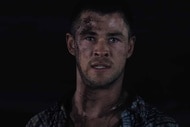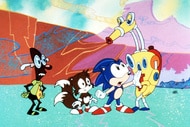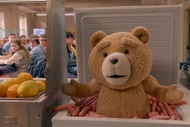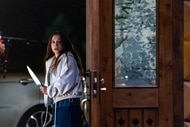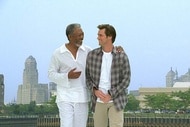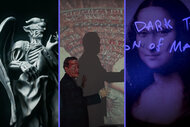Create a free profile to get unlimited access to exclusive videos, sweepstakes, and more!
Why The Mummy Still Delights, 25 Years Later
Stephen Sommers' adventure reboot remains a high point of the summer movie experience over the last 25 years.
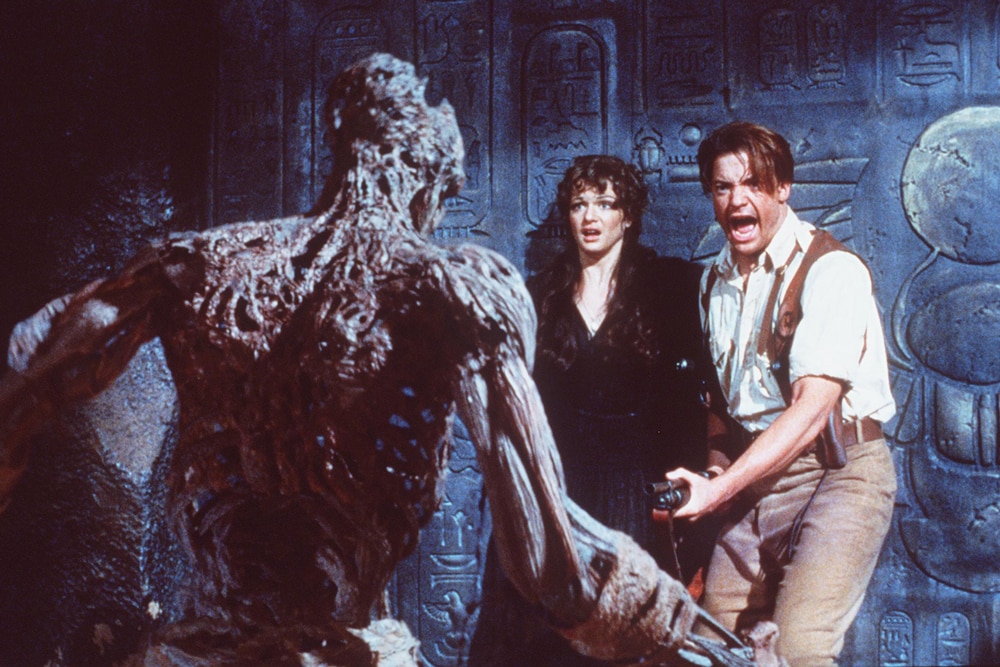
Universal Pictures' The Mummy (now streaming on Peacock) was not the biggest film of 1999, or the second-biggest, or the third biggest. Stephen Sommers' remake of the classic Universal Monsters film of the same name arrived in the midst of a huge year for film that included Star Wars Episode 1: The Phantom Menace just weeks later and would eventually include other hits like The Sixth Sense and Toy Story 2. By the time the dust settled on 1999, Sommers' film had placed sixth on the annual box office charts.
Talk to enough fans, though, and The Mummy certainly feels like the biggest film of its year. Even after a quarter century, it's a movie that casts a particular kind of spell, something borne out through the success of The Mummy Returns, then enduring even beyond that, becoming a cultural landmark in a way that feels both organic and earnest while never losing its scrappy, swashbuckling charm.
So what is it about The Mummy that's allowed it to endure in a way that other '90s blockbusters simply haven't? Why has this film remained a comforting piece of nostalgia for some, a thrilling new discovery for others, and a bona fide crowd pleaser long after its visual effects have been surpassed and its stars have moved on to other things? The answer is both simple and surprisingly complex.
For More on The Mummy:
The Mummy Returns to Theaters for 25th Anniversary
The Mummy Director Stephen Sommers on Returning for a Third Movie
Stephen Sommers on The Mummy's Tumultuous Development Process
The Mummy: Modern Movie, Classic Tones
Sommers, who also wrote the film, started off his story with a decision that forms the stylistic backbone of The Mummy. While other Universal Monsters remakes have taken a different path, moving the action to the present day or retreating to the deep past for something like Dracula Untold, The Mummy retains the setting of the original film and unfolds its story in 1920s Egypt, at a time when the country's antiquities market was still something like the Wild West, and the various cultures in the region clashed and merged in many different ways. While those culture clashes aren't necessarily always front and center in the film, rooting the action in the 1920s allowed Sommers to play with a lot of different elements, from the Medjai warriors who guard the secret at the core of the story to the plunder-hungry American explorers who just want treasure at any cost. It's an environment steeped in adventure from the very beginning.
It's also, perhaps even more importantly, the kind of environment that lets Sommers dive headfirst into a certain kind of adventure movie vibe that modern car chases and high-tech action movies often leave behind. Keeping things in the 1920s meant that Sommers could put his characters on horseback, let them navigate tombs and catacombs by torchlight, and of course, dress in the kind of clothes that suggest a connection to classic Hollywood.
That connection is then reinforced by what might be Sommers' greatest contribution to the film's success, even beyond his construction of the actual story: its merging of different genre tones. The Mummy is an action movie, yes, but it's also a romantic comedy, an adventure comedy, a horror film, and a few other things rolled into one, and Sommers emphasizes each genre choice with camera placements and stylistic flourishes that call the classics to mind. When violence and monstrous imagery unfolds as shadows projected on a wall, we're reminded of Universal Monsters classics. When Rick (Brendan Fraser), and Evie (Rachel Weisz) argue while simultaneously packing and unpacking the same suitcase, we get the films of Michael Curtiz and Frank Capra. When Evie gets caught balancing on a ladder between bookcases, we see Howard Hawks' screwball comedies. And then there are those desert vistas, shot on location, which call to mind filmmakers like David Lean. Heck, watch the monsters closely and you'll even get a bit of Sam Raimi.
By mustering all of these stylistic references and placing them in the same film, even for an audience that might not have seen the classics that came before, Sommers roots his movie in a timelessness and a sense of proven Hollywood flow that keeps us watching. Then, with the aid of a tremendous cast, he turns up the action.
From Monster Movie to Thrill Ride
As any fan of The Mummy will tell you, particularly now as the film has become one of the internet's favorite crowd pleasers, you can't talk about the film's success without talking about its cast, led by Fraser and Weisz as a mismatched pair of reluctant heroes who, thanks to one errant kiss, embark on a love story in the midst of Sommers' adventure movie scaffolding.
Rick O'Connell and Evelyn Carnahan are cut, like so much of the film, from classic cinematic molds; he the lovable scoundrel and she the buttoned-up academic, both of whom learn from each other and grow as people as they sand down each other's sharper edges. They're also, like the entire film, modern movie stars who carry a certain 1990s energy into the 1920s story without ever losing their timeless quality. It helps, of course, that both Fraser and Weisz are very classically attractive and look great in their '20s wardrobes, but there's more to it than beauty. Their chemistry feels both organic and part of a carefully designed greater whole, the product not just of two beautiful people standing near each other, but of two talented people deliberately building something together. You can see it in every scene, but you can see it specifically in the moments when they have to play through Sommers' deliberately over-the-top action sequences together. They're applying real craft, and it keeps the movie going.
Speaking of that over-the-top action, there's one final ingredient worth considering here when talking about The Mummy's immortality, and that's the way Sommers pushes his adventure setpieces without ever losing the film's timelessness. By the film's third act, things seem to go off the rails a bit, as Rick and Evie fight their way through an expansive tomb while Imhotep (Arnold Vosloo) tries to complete the ritual that was his whole purpose for resurrection. There are stunt performers in mummy costumes and CGI mummy warriors, flesh-eating scarabs and killer death traps galore, all exploding out of the screen at once. And for a while, you wonder how on Earth this is all going to end. There's a feeling of overdrive, of even the earlier grand setpieces from the film being eclipsed, of being overwhelmed by action and visual effects and stunts. Given how solid Sommers' grasp of the film is earlier on, it's hard not to see this as something that's by design, as Sommers saying that he's going to take all the goodwill he's earned over 90 minutes and really go for broke. It's the most modern thing about the film, and somehow, thanks to 25 years of blockbusters trying to create bigger and bigger finales, it too has grown retroactively timeless.
All of these elements and more place The Mummy as a film at the center of a deliberate, careful, and surprisingly graceful balancing act, one that helps it to stand out even among a nostalgia-hungry public that's always trying to elevate some past hit to modern classic status. The Mummy may never rise to the level of the films that inspired it, but in terms of 20th century popcorn blockbusters, it's still an absolute blast, and watching the film now, it's easy to see that's all it ever really wanted to be. It exists to make us happy, and it's still doing that after 25 years.
The Mummy is now streaming on Peacock.






